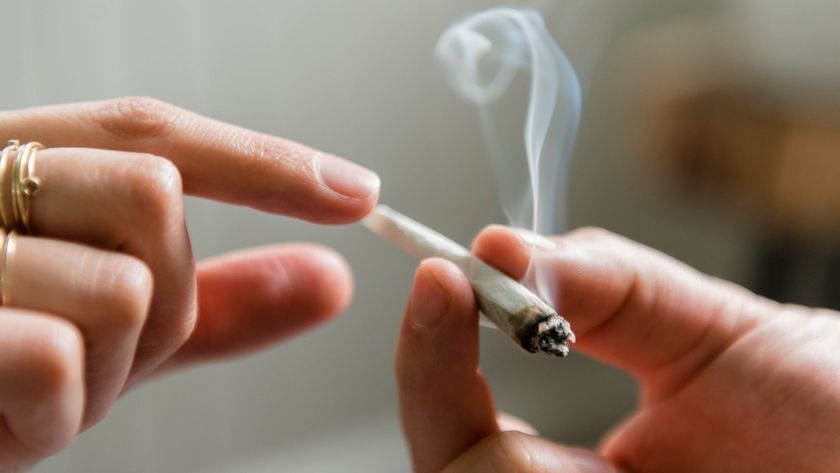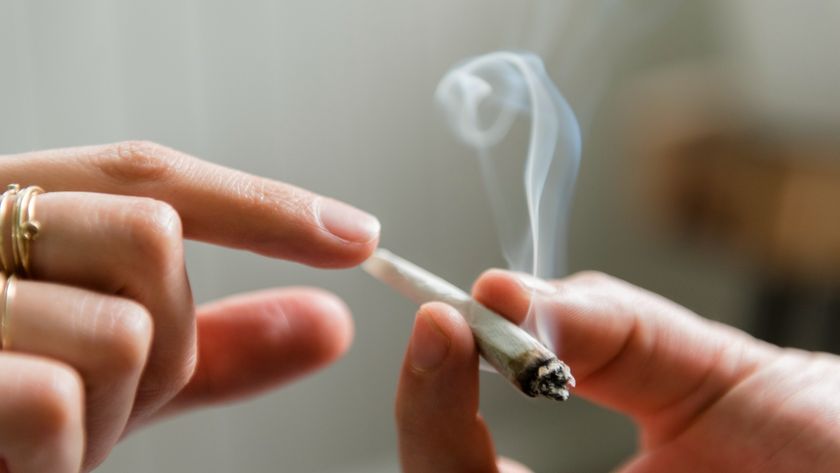Fake Weed, Real Drug: K2 Causing Hallucinations in Teens
Teens are getting high on an emerging drug called "fake weed," a concoction also known as K2 and "spice" that is also causing hallucinations, vomiting, agitation and other dangerous effects.
In the last month, Dr. Anthony Scalzo, a professor of toxicology at Saint Louis University, has seen nearly 30 cases of teenagers experiencing these adverse effects after smoking the fake weed, a legal substance that reportedly offers a marijuana-like high.
"K2 use is not limited to the Midwest; reports of its use are cropping up all over the country," Scalzo said. "I think K2 is likely a bigger problem than we're aware of at this time." For instance, Atlanta has seen about 12 cases recently.
[Marijuana: Facts About Cannabis]
K2 has been sold since 2006 as incense or potpourri for about $30 to $40 per three gram bag – comparable in cost to marijuana.
"K2 may be a mixture of herbal and spice plant products, but it is sprayed with a potent psychotropic drug and likely contaminated with an unknown toxic substance that is causing many adverse effects," said Scalzo, who also directs the Missouri Regional Poison Control Center.
Origin of K2
Sign up for the Live Science daily newsletter now
Get the world’s most fascinating discoveries delivered straight to your inbox.
This K2 compound was first created in the mid-1990s in the lab of organic chemist John W. Huffman of Clemson University, who studies cannabinoid receptors. He's not sure how the recipe for what is named JWH-018 (his initials) got picked up, but he did publish details on a series of compounds including JWH-018 in a book chapter. Even before that book came out, he recalls learning that in China and Korea people were selling the compound as a plant growth stimulant.
As for where it was first smoked or used as a recreational drug, Huffman thinks perhaps somewhere in Europe.
"Apparently somebody picked it up, I think in Europe, on the idea of doping this incense mixture with the compound and smoking it," Huffman told LiveScience. "You can get very high on it. It's about 10 times more active than THC," the active ingredient in marijuana.
[Marijuana: The Health Effects of Smoking Pot]
From a chemist's perspective, that means K2 has an affinity for the cannabinoid brain receptor (CB1) that's about 10 times greater than THC. For the less chemically inclined, it means you can smoke a lot less K2 to get just as high.
The compound works on the brain in the same way as marijuana's active ingredient THC, or tetrahydrocannabinol. Both compounds bind to the CB1 receptors, which primarily affect the central nervous system. JWH-018 also binds to the peripheral brain (CB2) receptors, which are involved in the immune system, Huffman said.
Hallucinations and delusions
Since JWH-018 or K2 acts like marijuana, you'd expect to see the same effects, including sleepiness, relaxation, reduced blood pressure, and at high doses, hallucinations and delusions.
While some patients between the ages of 14 and 21 were showing up with hallucinations, other symptoms, such as increased agitation and elevated blood pressure and heart rates, didn't match up with marijuana.
Scalza speculates either another compound is responsible for the nasty side effects, or the concentration of JWH-018 is too high.
To answer this question, Scalzo is having doctors test patients' urine for JWH-018 and other compounds, but he is having trouble getting patients to agree to the test.
"This is not something that people are agreeing to," Scalzo said during a telephone interview. "Here's a legal substance that we don't know really that much about that people are putting into their bodies without quality control."
And even though doctors like Scalzo say they'd like to help the teens, that's not enough. "Phenomenally, people are saying no. They're afraid someone is going to find something," though Scalzo has no idea why they'd be afraid.
Dangerous drug
Both Scalzo and Huffman agree the drug is dangerous.
Further testing is needed, but Scalzo says the symptoms, such as fast heart beat, dangerously elevated blood pressure, pale skin and vomiting suggest that K2 is affecting the cardiovascular system of users. It also is believed to affect the central nervous system, causing severe, potentially life-threatening hallucinations and, in some cases, seizures.
"It's like playing Russian roulette. You don't know what it's going to do to you," Huffman said. "You're a potential winner of a Darwin award," referring to the tongue-in-cheek awards given to people who "do a service to humanity by removing themselves from the gene pool."
In addition to the compound being made without strict quality control or any regulation, as far as anyone knows, the compound itself has never been tested on humans. And when it was tested on mice, Huffman said, the animals were euthanized at the end of the experiment, so scientists don't even know how it affects mice long-term. "And mice are not humans," Huffman said.
Jeanna Bryner is managing editor of Scientific American. Previously she was editor in chief of Live Science and, prior to that, an editor at Scholastic's Science World magazine. Bryner has an English degree from Salisbury University, a master's degree in biogeochemistry and environmental sciences from the University of Maryland and a graduate science journalism degree from New York University. She has worked as a biologist in Florida, where she monitored wetlands and did field surveys for endangered species, including the gorgeous Florida Scrub Jay. She also received an ocean sciences journalism fellowship from the Woods Hole Oceanographic Institution. She is a firm believer that science is for everyone and that just about everything can be viewed through the lens of science.












